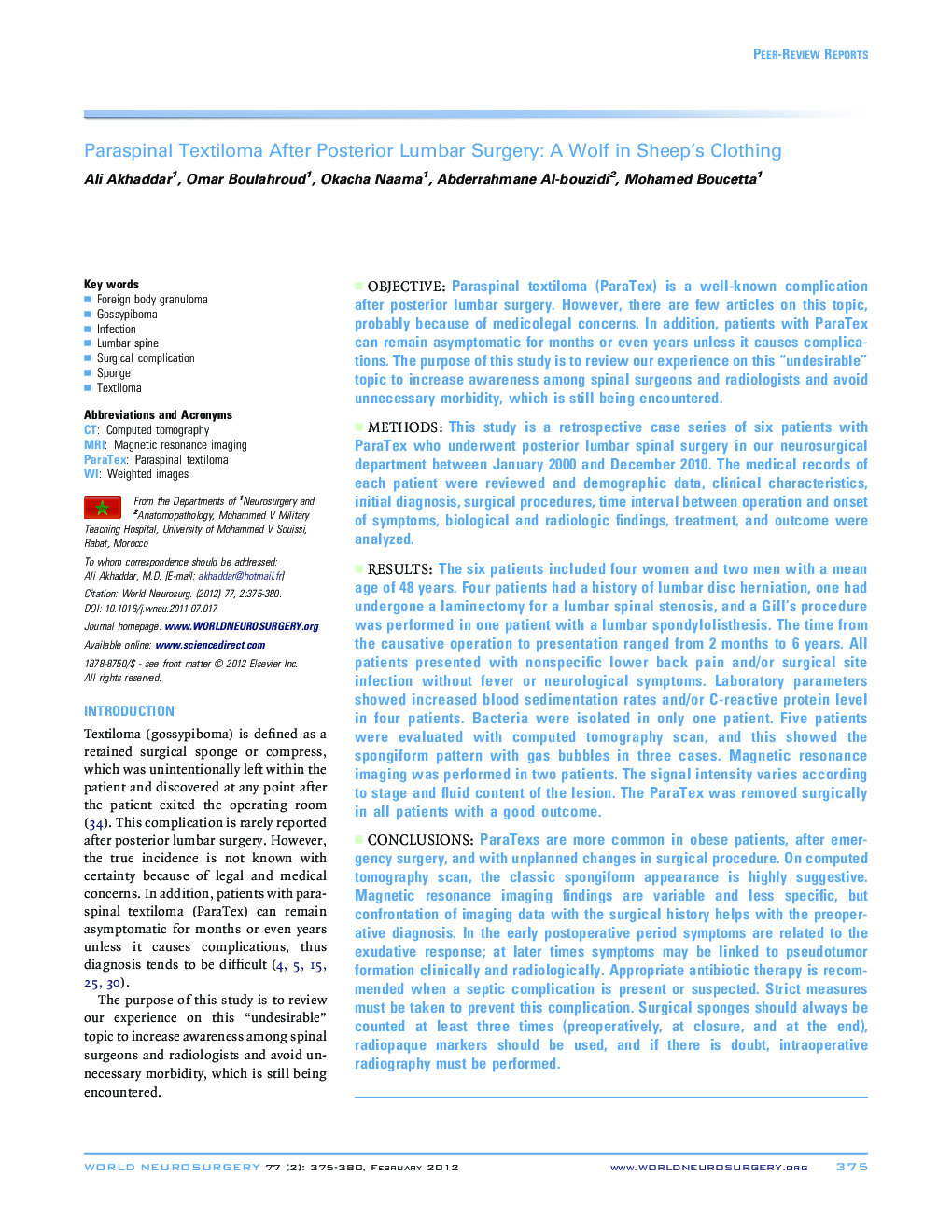| کد مقاله | کد نشریه | سال انتشار | مقاله انگلیسی | نسخه تمام متن |
|---|---|---|---|---|
| 3097226 | 1190939 | 2012 | 6 صفحه PDF | دانلود رایگان |

ObjectiveParaspinal textiloma (ParaTex) is a well-known complication after posterior lumbar surgery. However, there are few articles on this topic, probably because of medicolegal concerns. In addition, patients with ParaTex can remain asymptomatic for months or even years unless it causes complications. The purpose of this study is to review our experience on this “undesirable” topic to increase awareness among spinal surgeons and radiologists and avoid unnecessary morbidity, which is still being encountered.MethodsThis study is a retrospective case series of six patients with ParaTex who underwent posterior lumbar spinal surgery in our neurosurgical department between January 2000 and December 2010. The medical records of each patient were reviewed and demographic data, clinical characteristics, initial diagnosis, surgical procedures, time interval between operation and onset of symptoms, biological and radiologic findings, treatment, and outcome were analyzed.ResultsThe six patients included four women and two men with a mean age of 48 years. Four patients had a history of lumbar disc herniation, one had undergone a laminectomy for a lumbar spinal stenosis, and a Gill's procedure was performed in one patient with a lumbar spondylolisthesis. The time from the causative operation to presentation ranged from 2 months to 6 years. All patients presented with nonspecific lower back pain and/or surgical site infection without fever or neurological symptoms. Laboratory parameters showed increased blood sedimentation rates and/or C-reactive protein level in four patients. Bacteria were isolated in only one patient. Five patients were evaluated with computed tomography scan, and this showed the spongiform pattern with gas bubbles in three cases. Magnetic resonance imaging was performed in two patients. The signal intensity varies according to stage and fluid content of the lesion. The ParaTex was removed surgically in all patients with a good outcome.ConclusionsParaTexs are more common in obese patients, after emergency surgery, and with unplanned changes in surgical procedure. On computed tomography scan, the classic spongiform appearance is highly suggestive. Magnetic resonance imaging findings are variable and less specific, but confrontation of imaging data with the surgical history helps with the preoperative diagnosis. In the early postoperative period symptoms are related to the exudative response; at later times symptoms may be linked to pseudotumor formation clinically and radiologically. Appropriate antibiotic therapy is recommended when a septic complication is present or suspected. Strict measures must be taken to prevent this complication. Surgical sponges should always be counted at least three times (preoperatively, at closure, and at the end), radiopaque markers should be used, and if there is doubt, intraoperative radiography must be performed.
Journal: World Neurosurgery - Volume 77, Issue 2, February 2012, Pages 375–380